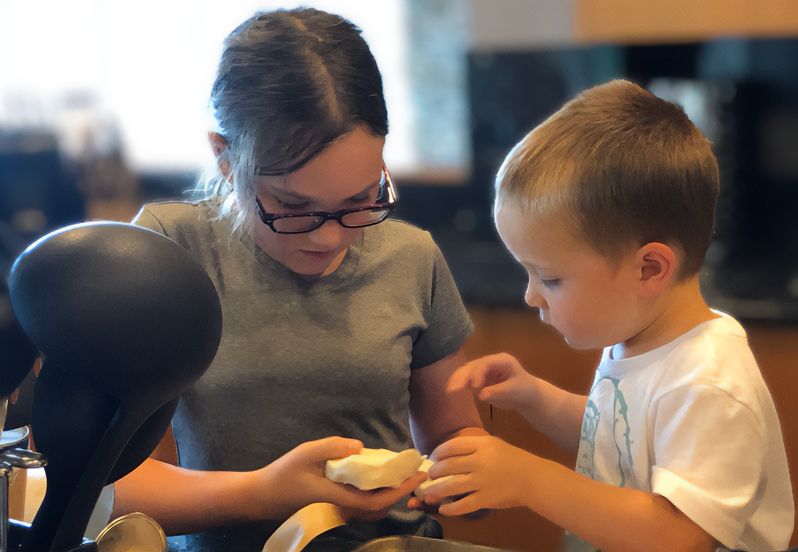One Mom’s Eclectic Homeschool Method Curriculum And How To Get Started

Homeschooling in its simplest form means teaching children in the home. It is a way for parents to also take on the role of educators and place themselves in charge of their children’s learning process. How each family approaches homeschooling is different, and because there are so many different curriculum options, a lot of parents who look into homeschooling feel overwhelmed. For some the best way to go is a more eclectic homeschool curriculum.
When I first started homeschooling ten years ago, I knew I was doing what is best for my children.I did my research, asked around, and found that an eclectic approach was easy. Some parents go the traditional route, setting up an in-home classroom area and a rigorous school schedule. Others prefer freeform studies where children can pick and choose which subjects appeal to them throughout the day. There’s also the Waldorf approach that cuts out technology and focuses on allowing children to be children for a while, as well as the Montessori homeschool curriculum which hosts hands-on learning practices year round. In addition, there are numerous online schools that teach children everything through computer use.
Eclectic homeschooling takes the wisdom that works from each of these methods without having to choose just one. It gives parent educators and their students plenty of options to make learning interesting and fun. I started homeschooling when my eldest was in pre-school. My children have never gone to a public or private school. Instead of latching onto one curriculum or style, I found it better served our family to experiment with an eclectic style that combined different elements from all the home education options.
Though doing eclectic homeschooling, the tradition of starting school at the same time on set days was important to me. I wanted my children to know how to show up on time. It has served us well, along with doing most of the work in a specific location dedicated to learning. My homeschool curriculum still includes print books and some workbook writing because physical connections to the real world seem to help my children connect with what they are learning. It’s offered us a sense of normalcy even though most children still go to public or private school.
I also feel it necessary to give my children some freedom. If they want a snack, or need to get up and stretch to push through a frustrating lesson, they are allowed. No one has to ask to go to the bathroom, and on beautiful days we do take extra outside time and even garden as part of the curriculum.
This is part of the Waldorf homeschool approach, but their philosophy of banning technology in their curriculum is too extreme for us. Although I do find plenty of merit in keeping babies and toddlers away from screens, and limiting electronics time as children age, many fields require it, and technological communications are so popular that they have become a necessity to relate to others. The practice of limiting it works better for us. My children are less distracted and more focused when they haven’t watched TV in a few days. They appreciate their relationship better than their peers who bring electronics to the park and other social outings. Taking part of Waldorf but not all of it and using it, was one component of my eclectic homeschooling curriculum.
Despite concerns about screen time causing internet addiction, some online lessons appeal to me as a teacher because websites like starfall.com make pre-school through early elementary homeschooling exciting. PragerU’s kid’s lessons are expanding, and Khan academy is an international standard that offers so many curriculum materials that it cannot be ignored.
All of these practices give children a well rounded eclectic homeschool experience. They each host wonderful resources to ensure a studious curriculum that will not only impart knowledge but also gift children with individualized wisdom.
Best of all, the eclectic style suits homeschool mothers like me, who like to get creative sometimes. My favorite aspect of our curriculum is the hands-on approach that is encouraged by the Montessori method. Experiments where the children get to care for caterpillars as they metamorphosis into butterflies, or look after frogs from the early tadpole stages through adulthood are projects my kids look forward to every year.
We also homeschool year round, so our eclectic homeschool curriculum includes summer activities that encourage exploration of the world and growing our own food. I find that by taking shorter breaks, more often throughout the year — instead of a long summer break — the children retain knowledge and are more likely continue seeking answers to their questions about life.
Any parent who is looking to homeschool should know that it is easier than everyone thinks. There are more curriculum options available than ever. From School Zone, Spectrum, and Comprehensive Curriculum of Basic Skills workbooks, to kits from the Nature Gift Store, the best way to start is to get a few materials and test a lesson or two, then build more from there.



